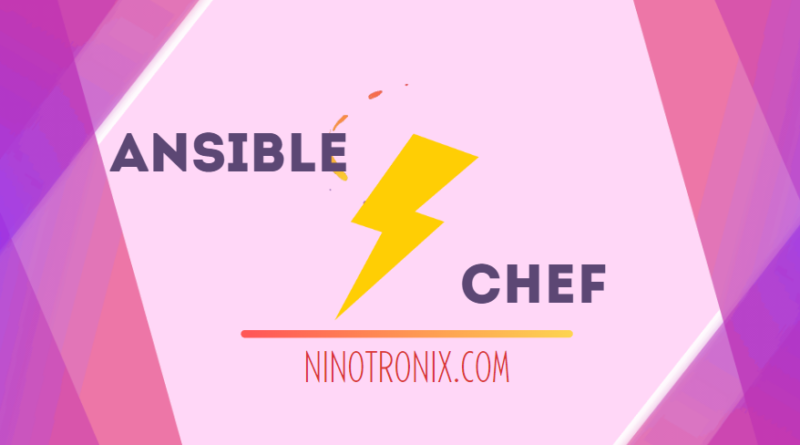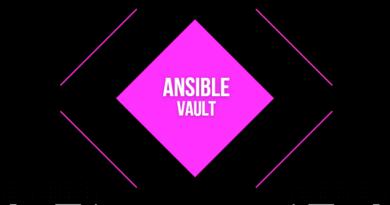Ansible vs. Chef: Which Configuration Management Tool Is Best for You?
Configuration management is a key component of modern IT operations, allowing organizations to manage and automate their infrastructure at scale. Two popular configuration management tools are Ansible and Chef, both of which offer powerful automation capabilities.
In this article, we’ll compare Ansible versus Chef to help you determine which technology is best for you.
What is Ansible?
Ansible is a free and open-source configuration management and automation tool for managing and automating IT infrastructure at scale. It defines infrastructure as code using YAML (Playbook), a simple and human-readable language. Ansible is agentless, which implies that no software has to be installed on the target machines. It talks with them instead via SSH or WinRM.
What is Chef?
Chef is another robust open-source configuration management and automation application for managing and automating IT infrastructure at scale. It uses a domain-specific language called the Chef DSL to define infrastructure as code (Cookbooks). It’s agent-based, meaning that it requires a software component called the Chef client to be installed on the target systems. It employs a master-server architecture, with the Chef server managing configuration data and the Chef client enforcing it on target systems.
Let us now see the differences between them one by one.
1) Architecture
Both Ansible and Chef are intended to manage IT infrastructure at scale, although their architectures differ.
Ansible has an agentless architecture, which means it does not require any software to be installed on the target machines. It connects with them using SSH or WinRM instead. Ansible uses a push-based approach in which the control node delivers commands to target systems and awaits a response.
Ansible’s design is straightforward and lightweight, making it simple to set up and use. However, it may be less secure than an agent-based solution because SSH or WinRM must be enabled on the target systems.
Chef uses an agent-based architecture, with the Chef client installed on each target system. The Chef client connects to the Chef server regularly to receive its configuration and apply it to the node. Chef uses a pull-based architecture in which target systems obtain their configuration from the Chef server.
Chef’s architecture is more complicated than Ansible’s, but it provides superior security because the Chef client only communicates with the Chef server and no external ports on the target systems must be open.
2) Installation and Setup
Ansible is often considered to be easier to install and set up than Chef.
Ansible can be installed via the package manager on any recent Linux distribution, and its system requirements are minimal, requiring only Python and SSH or WinRM on the target machines, and its inventory file is a simple text file that can be readily changed.
Ansible is an agentless tool, which means it does not require any software to be installed on the target machines.
Chef, on the other hand, necessitates the installation of a Chef Workstation on the control node as well as the Chef client on each target machine. Chef uses a pull-based methodology, in which the target systems check in with the Chef server regularly to acquire their configuration, and its configuration files are more sophisticated, demanding better expertise of the Chef ecosystem.
3) Programming Languages
Ansible is largely based on Python, which is used for building modules and plugins, and YAML, which is used for writing playbooks and defining configuration files. Ansible also supports additional programming languages such as Bash, Ruby, and Perl.
Chef, on the other hand, uses its domain-specific language (DSL) called Chef DSL, which is based on Ruby. Chef DSL is used to create configuration files, while Ruby is used to creating custom resources and plugins. Chef, on the other hand, supports various programming languages such as Python, Perl, and Bash.
Ansible and Chef both support numerous programming languages, however, Ansible is mostly built on Python and YAML, whilst Chef is primarily based on Ruby and its DSL.
4) Community Support and Resources
Both Ansible and Chef have large, active communities with a wealth of information.
Ansible has a well-documented website, community-maintained resources, and helpful users.
Chef includes well-structured documentation, a dedicated website called the Chef Supermarket for community-contributed resources, and formal training and certification programs.
5) Ease of Use
Ansible is considered as one of the easiest configuration management tools to learn and use. It offers a straightforward YAML-based syntax and a large library of pre-built modules and roles.
Chef, on the other hand, has a higher learning curve due to its complicated Ruby-based syntax and agent-based architecture, but it provides greater flexibility for more advanced settings. Users should select the tool that best suits their needs and degree of competence.
6) Performance and Scalability
The agentless and push-based architecture of Ansible makes it lightweight, quick, and scalable. Chef’s agent-based and pull-based approaches provide greater granular control over configuration changes and improved security, but they may use more resources and cause network congestion.
Ansible and Chef both are very scalable and can handle thousands of systems at the same time. Ansible, on the other hand, is often regarded as being quicker and more efficient because of its agentless design and push-based model.
7) Security and Compliance
When selecting a configuration management technology, security and compliance must be taken into account. Ansible and Chef both have capabilities that help to guarantee safe and compliant setups.
Ansible uses SSH to connect to remote machines and transmit data securely, and its YAML format provides for simple configuration auditing and version control. To provide safe and compliant setups, Ansible also includes role-based access control and encrypted data management.
Chef’s agent-based design, which leverages SSL certificates for secure communication between nodes, provides a similar degree of security and compliance. Chef also provides encrypted data management, role-based access control, and connectivity with LDAP and Active Directory.
8) Integration with Other Tools
Integration with other technologies is critical for implementing good DevOps practices. Ansible and Chef both integrate with a broad range of additional tools, including source control, monitoring, and containerization platforms.
Ansible integrates source control technologies like Git and has plugins for common monitoring tools like Nagios and Zabbix. Ansible also has plugins for containerization platforms like Docker and Kubernetes, allowing for the simple deployment and management of containerized applications.
Chef supports plugins for containerization systems like Docker and Kubernetes, as well as comparable interaction with source control and monitoring technologies. Chef also interfaces with cloud systems such as Amazon Web Services (AWS) and Microsoft Azure, making cloud resource deployment and administration simple.
In conclusion, both Ansible and Chef are strong tools with their own set of strengths and drawbacks, and the decision between the two is dependent on the individual needs and requirements of each environment.




